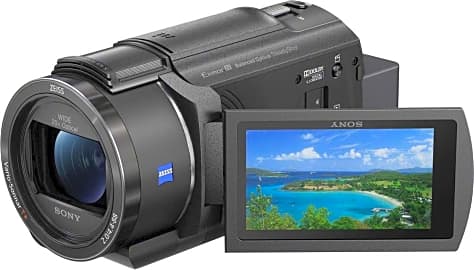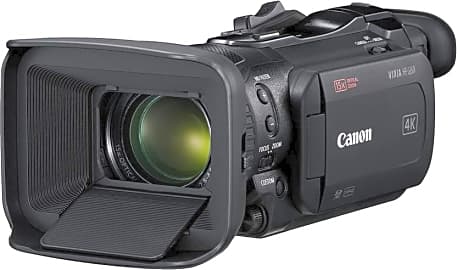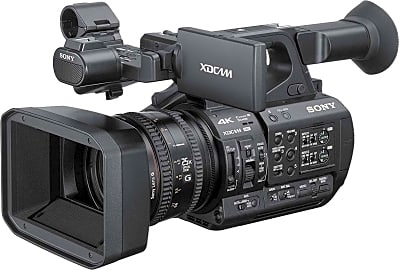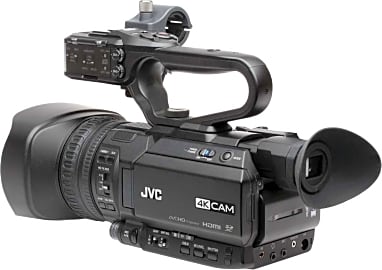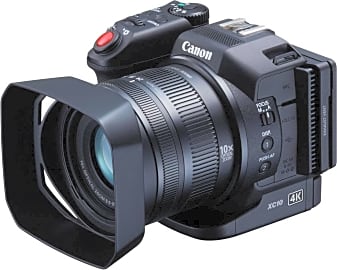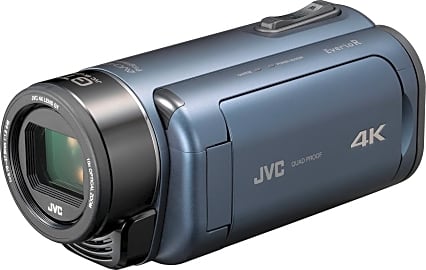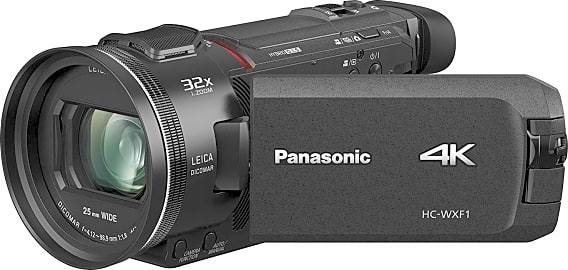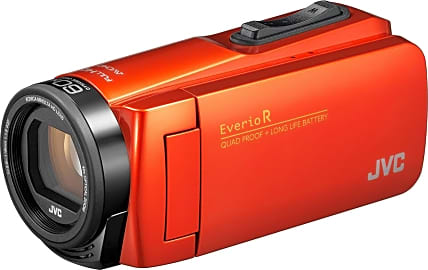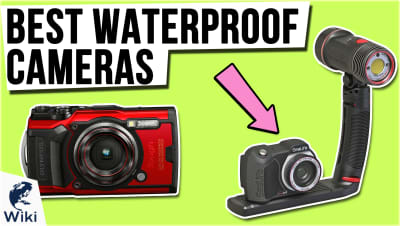The 10 Best Camcorders

This wiki has been updated 39 times since it was first published in March of 2015. Just because your smartphone's camera can record decent video, that doesn't mean you should always use it to do so. The camcorders on our list can shoot in HD and 4K resolutions, and boast image stabilizers in addition to the ability to manually control both your focus and exposure. We've ranked them here by their lens quality, sensor size, and a variety of available special features. When users buy our independently chosen editorial choices, we may earn commissions to help fund the Wiki.
Editor's Notes
November 25, 2020:
An interesting development among the few models to come out in recent days is a move toward affordable cameras with some degree of waterproofing and shockproofing. Likely a response to the immense popularity of action cameras, models like the JVC Everio R GZ-RY980-A and the Canon Vixia HF W11 offer enough water-resistance to handle an encounter with rain or even a quick plunk in the pool. The big sacrifice here is that they have to use a sealed housing around the battery chamber, necessitating a built-in cell rather than a swappable one. so, if you run out of juice in the middle of shooting something, you can't just put a new battery in; you have to wait for it to recharge.
Other new additions to the ranking include the Canon Vixia HF G60 and the Canon XA55, the latter of which is something of an upgrade to the previously included XA11, one of the most important differences of which — despite its simplicity — is a thin plastic covering for its audio controls. This helps ensure that nothing gets unintentionally altered between shots, so your sound will remain consistent.
January 18, 2019:
The camcorder market continues to push toward 4K resolution as a baseline standard, and the majority of offerings on our list rise to the occasion. Sony's video department seems to grow in strength every year, with their XDCam among some of the finest selections available. Canon, however, is all over this list, as they seem to have excellent products at a bunch of price points.
Why Camcorders Are Still Relevant
That many lenses for a DSLR system would be liable to break your bank, your back, or both.
There’s probably a voice knocking around inside your head right now that’s trying to convince you that the camcorder market is dead, and that there’s no reason to invest in a camcorder anymore. While it is true that the industry has taken a pretty big hit in that sector, there are still plenty of reasons to choose a camcorder over your phone or a DSLR.
The biggest two differences between a camcorder and your smartphone are the sizes of the lens and the light sensor. In both of these categories, bigger is better. A larger lens physically has the ability to capture more light. That will create sharper, more dynamic images in good lighting conditions, and it will also render high-quality images in poor light conditions in which cell phone cameras could scarcely operate.
The sensor size, however, is probably this most important of these differences. It’s important to understand that megapixels don’t matter as much to camcorders as they do to cell phones and DLSRs, both of which are relied on much more heavily for still photography than they are for videography. That means that not only are most of the sensors found in camcorders bigger than those you’d see in smartphones, they also have fewer megapixels, and if you thought that was a bad thing, think again.
Megapixels correlate directly to resolution. 4K video is called 4K video because it has a pixel count of 3840x2160. That’s only a little over eight megapixels. If a 16 MP sensor in a cell phone wanted to shoot in 4K, it would ignore almost half of its available pixels in doing so. When your camcorder utilizes as few pixels as it needs to effectively shoot in 4K, it can allow those pixels to be bigger, and bigger pixels mean better, sharper low-light performance, as well as a more impressive dynamic range.
Of course, a DSLR with a full frame or APS-C sized sensor will have pixels about as large, and it will also boast some pretty incredible filmmaking features. But the hassle of all those lenses, and the limitations of your zoom range could be a big problem. There are camcorders out there with zoom capabilities that can optically take you from a 28mm lens equivalent, all the way up to 600mm. That many lenses for a DSLR system would be liable to break your bank, your back, or both.
So, if you’re interested in shooting home movies, making films, or just capturing the milestones in your life on video, the camcorder will give you the best image with the least hassle.
Choosing The Right Camcorder For You
When you set out to make a selection from the models on our list, you might notice that there are some very obvious differences among these cameras, and that there are also things you could only surmise be reading carefully. Attending to the largest differences among the camcorders on the market will be the easiest way to whittle our list down to just a few options, and from there you can make a more informed decision.
At a certain price point, you’ll notice that camcorders gain viewfinders.
More than any other variable, your comfort level with manual controls is going to be a big factor in your decision. Often, you can identify this difference by size: bigger camcorders tend to have more complicated controls than smaller ones. Than said, the vast majority of camcorders on the market can simply run on automatic, controlling everything from focus to exposure — all you have to do is point it at something and hit the little red button. The more manual control you desire, however, the more complicated (and expensive) the experience will become.
This largely comes down to your intended use for the camcorder, as cinematographers and soccer moms have very different expectations for their movies. The former should look for a camcorder with the largest lens elements, a full-sized manual zoom ring, and as high a resolution as the market can provide. The latter should prioritize size, zoom distance, and ease of use, so that you can spend more time watching your kids score goals and less time diving into complicated menu systems to make sure you’re recording in the right format.
At a certain price point, you’ll notice that camcorders gain viewfinders. These may seem like relics of a bygone age (think the giant VHS recorders of the 1990s), but today’s viewfinders are often little OLED screens that have better resolution than the articulating screens that most people, for whatever reason, prefer to use. If you know you’re going to do a lot of filming in very bright conditions (daytime at an athletic field, on the beach, etc.), that viewfinder may be the only thing that lets you see what you’re actually shooting.
Ways To Get The Best Video Out Of Your Camcorder
Now that you’ve decided to get yourself a camcorder and you’ve picked out a stellar model, there are some additional items and techniques that will maximize the quality of your experience. Without these, you might begin to taste a little buyer’s remorse.
Next, if your camcorder has any kind of image stabilization, make sure that it’s turned on.
For starters, make sure you have fast, large memory cards. Most cameras won’t even let you record at their highest video resolutions if you have inferior cards. High-resolution video cameras require a baseline of writing speed to record what they're processing. These better-quality files are usually bigger, as well, which necessitates larger cards.
Next, if your camcorder has any kind of image stabilization, make sure that it’s turned on. These stabilizers can make your camera chew through its batteries a little faster, but the difference in image quality will amaze you.
Finally, in order to protect your gear and store any additional batteries, lights, microphones, or anything else you wish to acquire, you’re going to need a high-quality camera bag. Camera bags are superior to simple messenger bags or backpacks in that they have much more padding to offer for the protection of your gear. What’s more, many feature additional pockets sized to fit common accessories, as well as Velcro dividers that you can reposition throughout the bag to make custom compartments.


